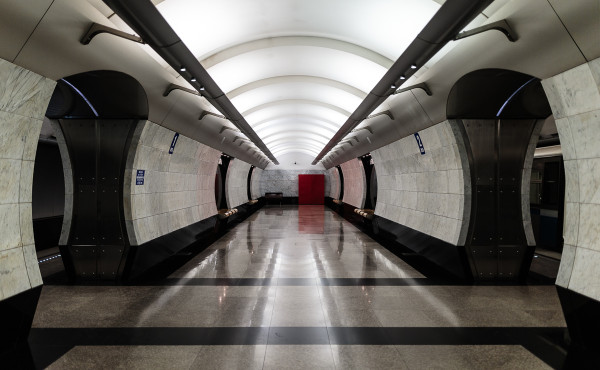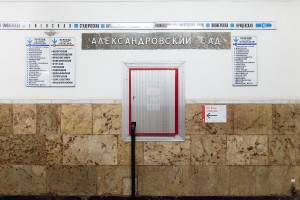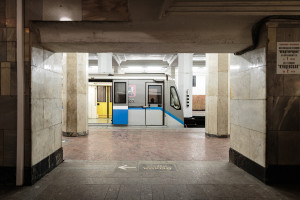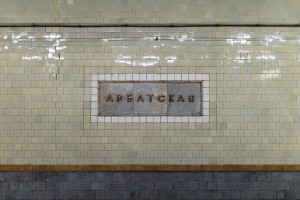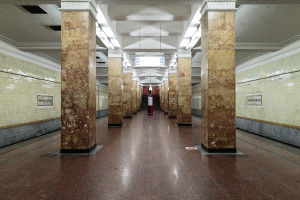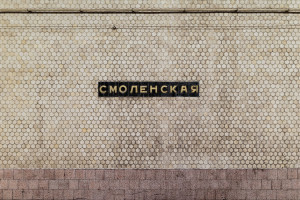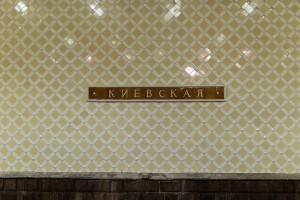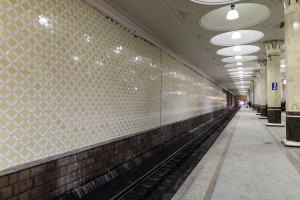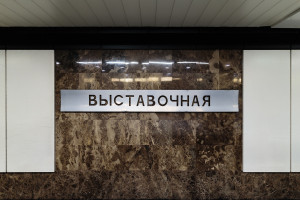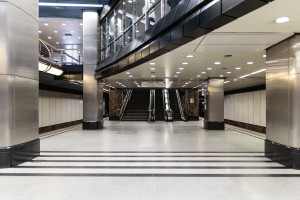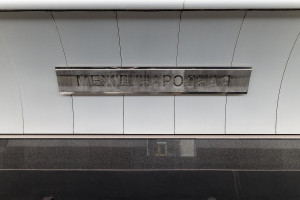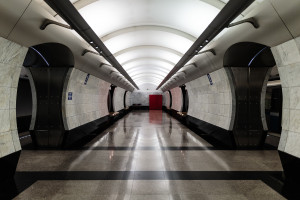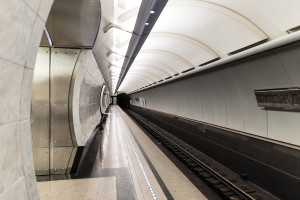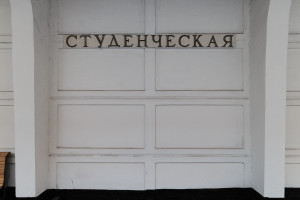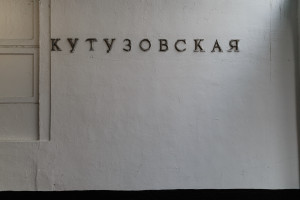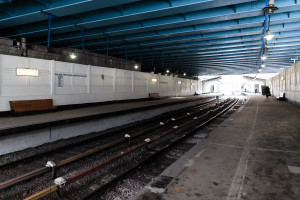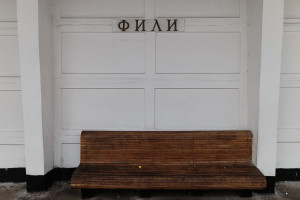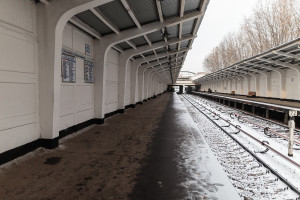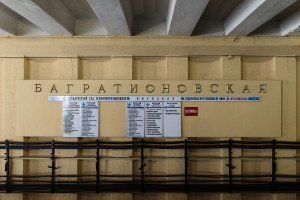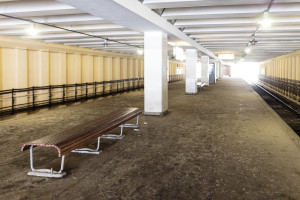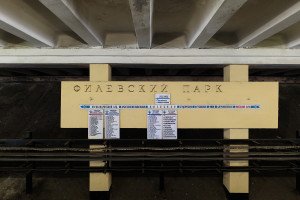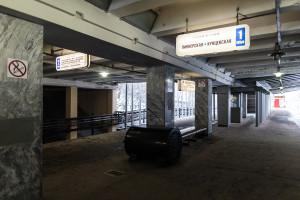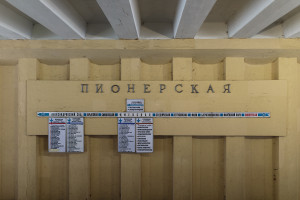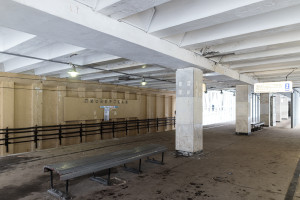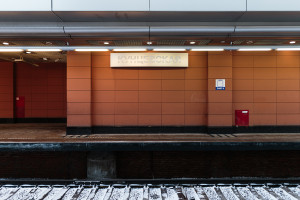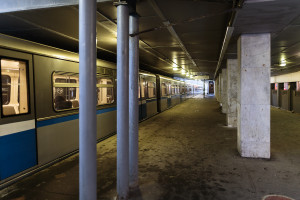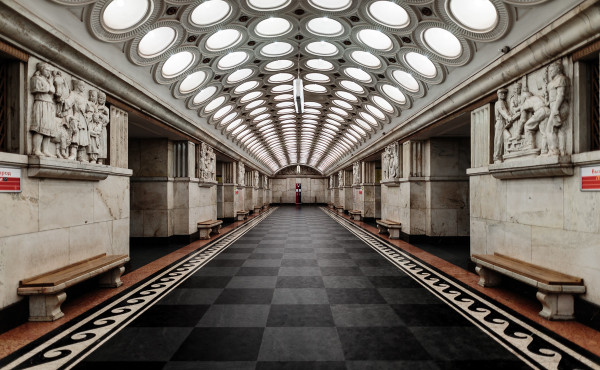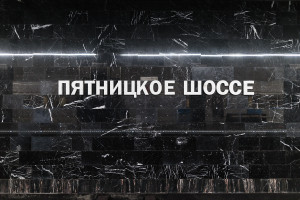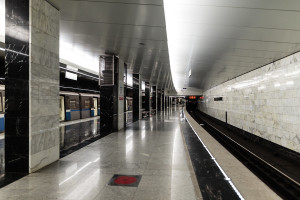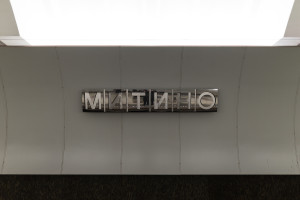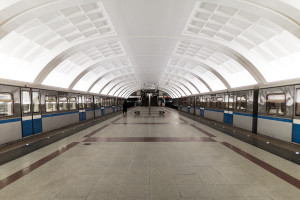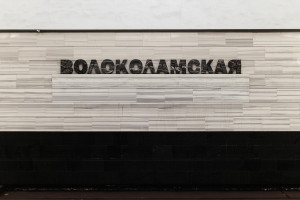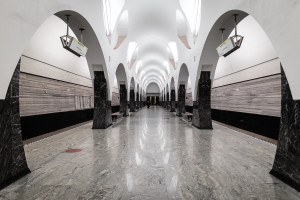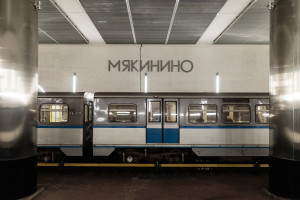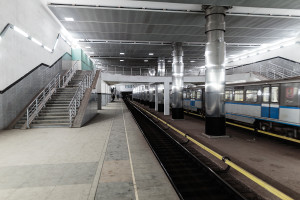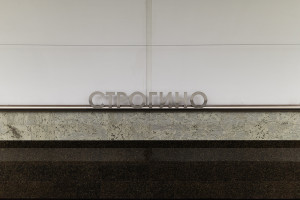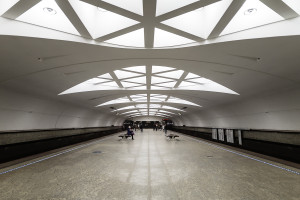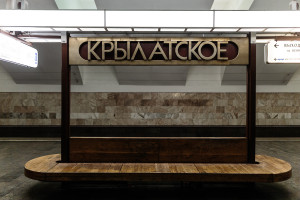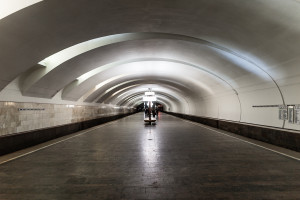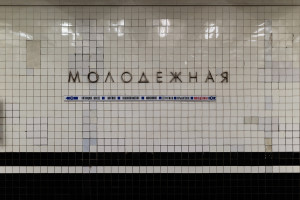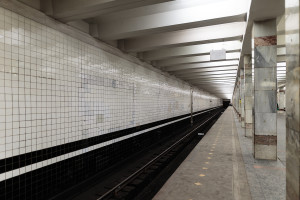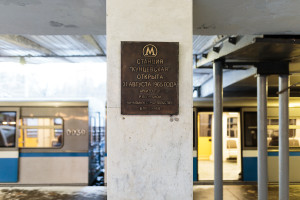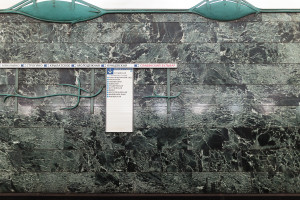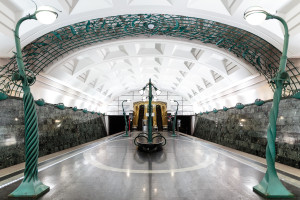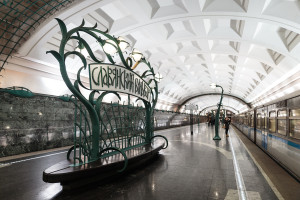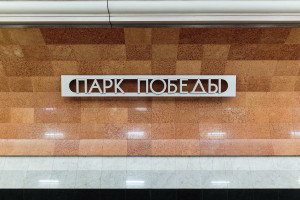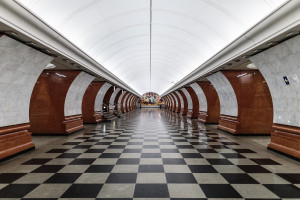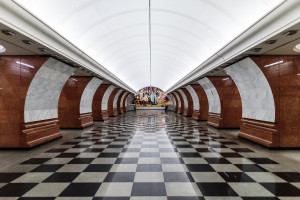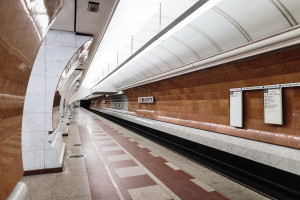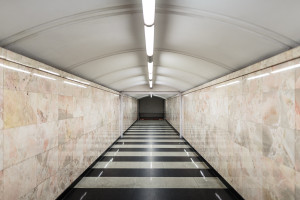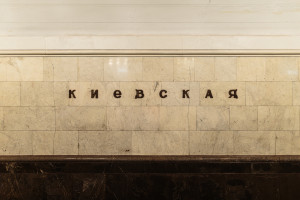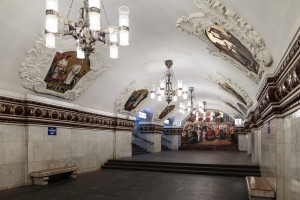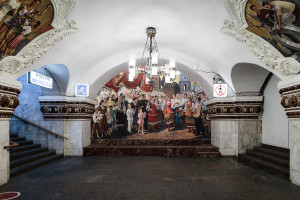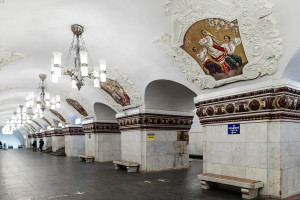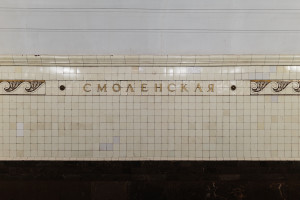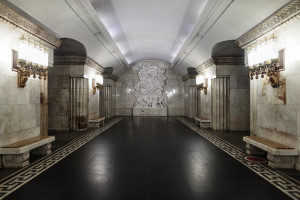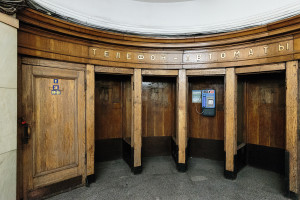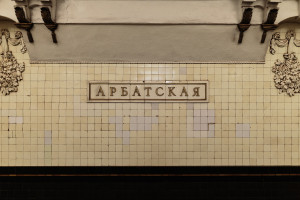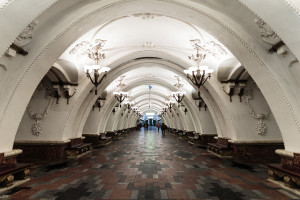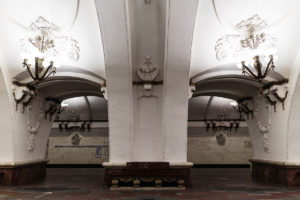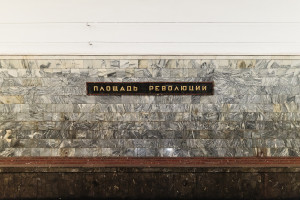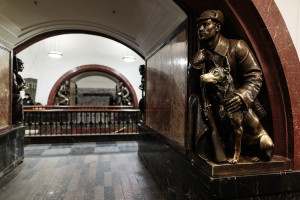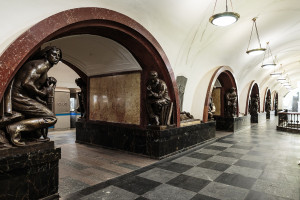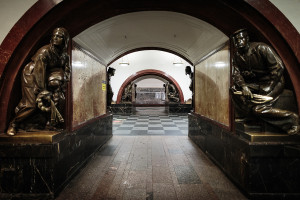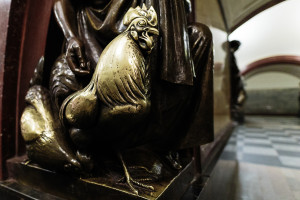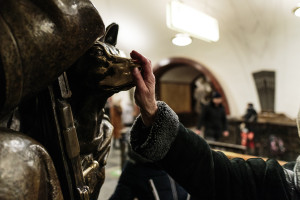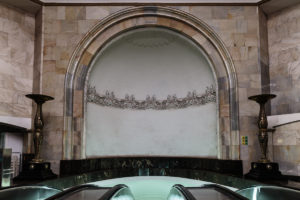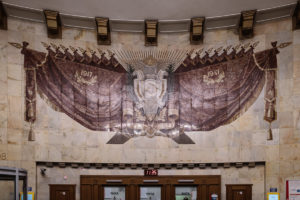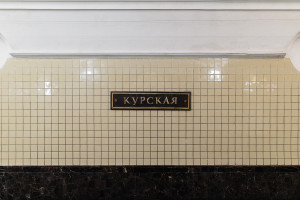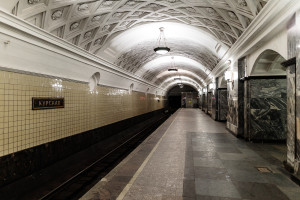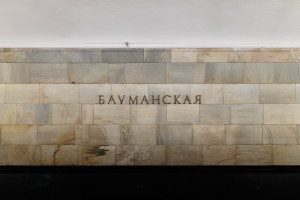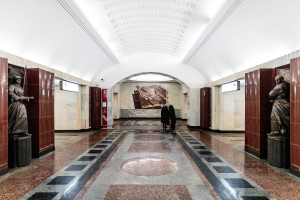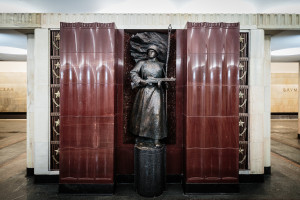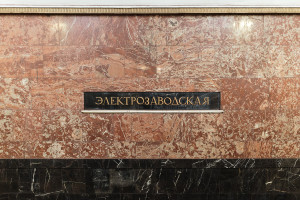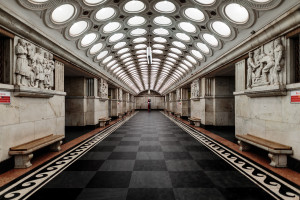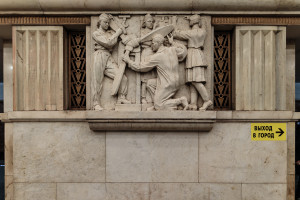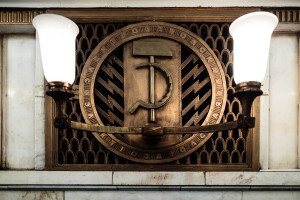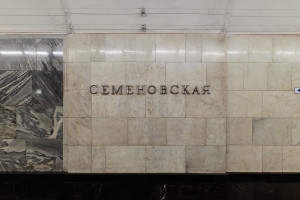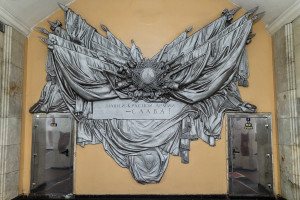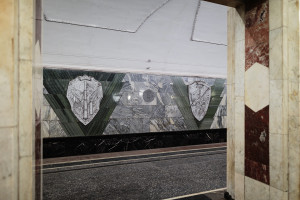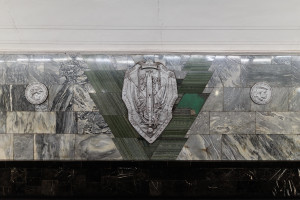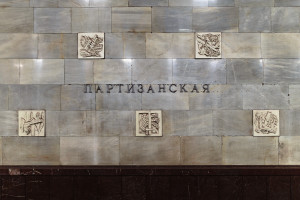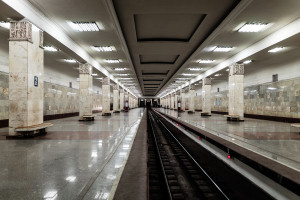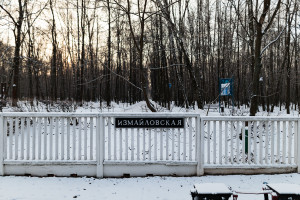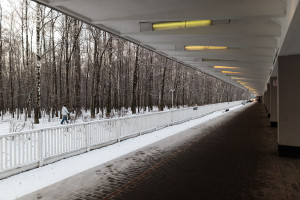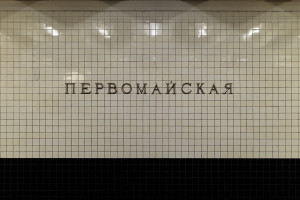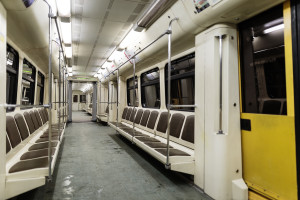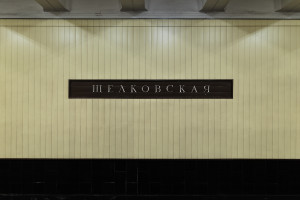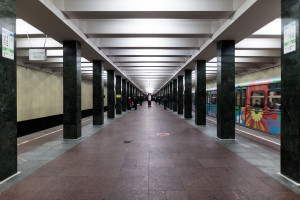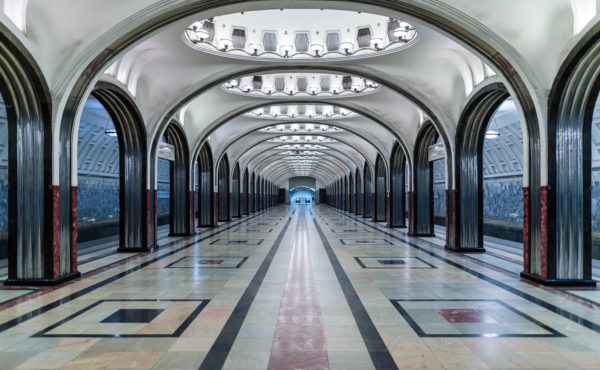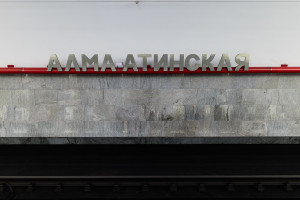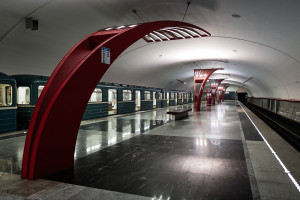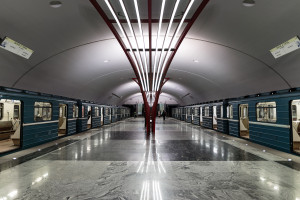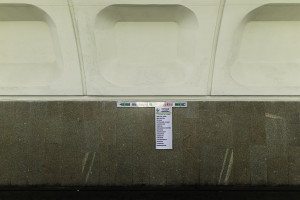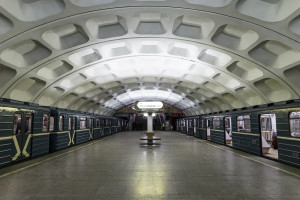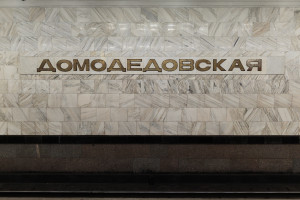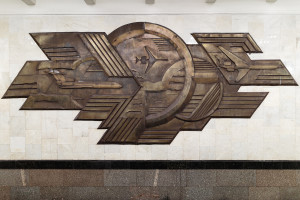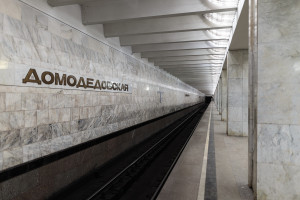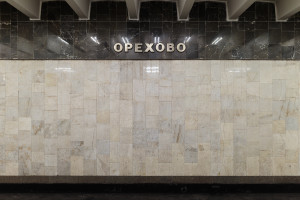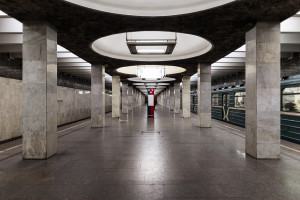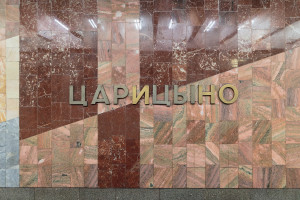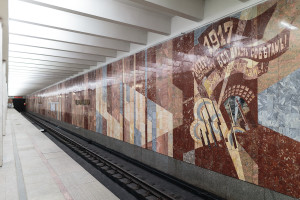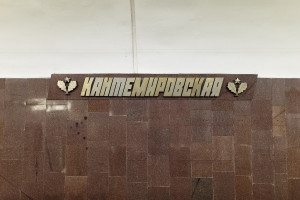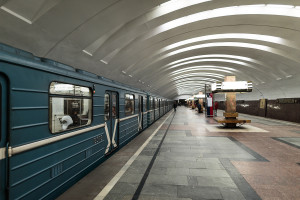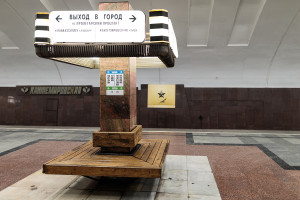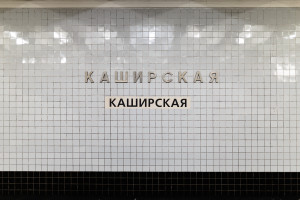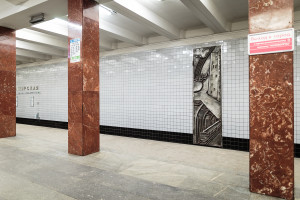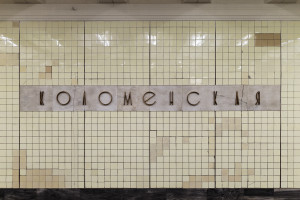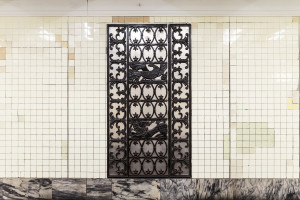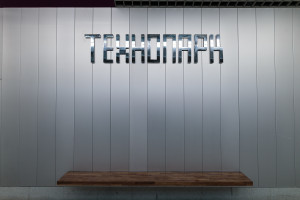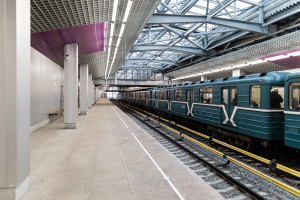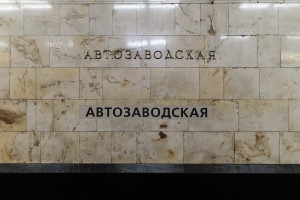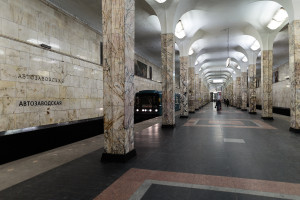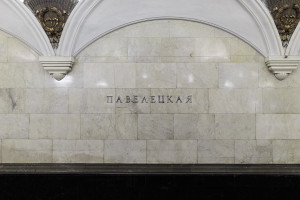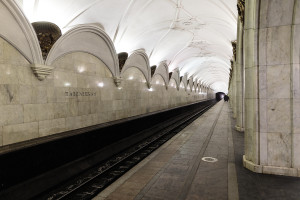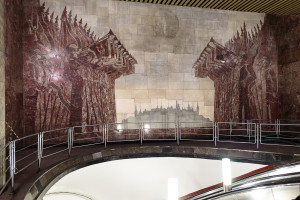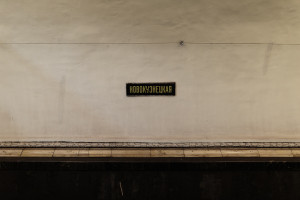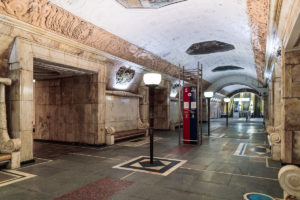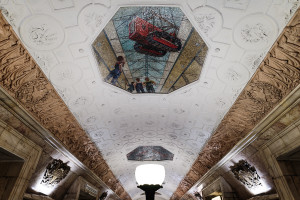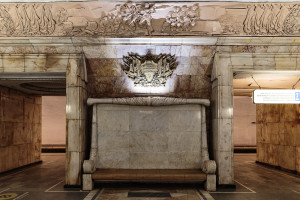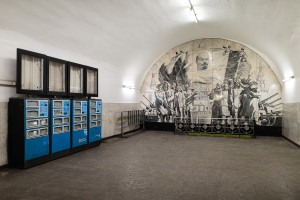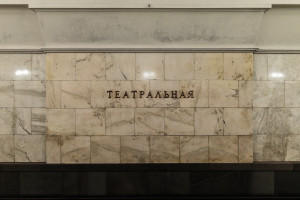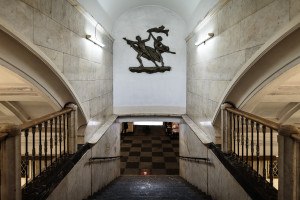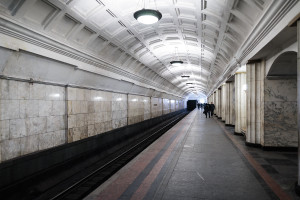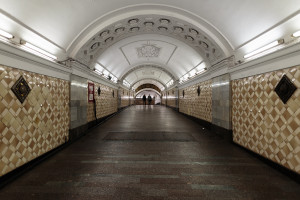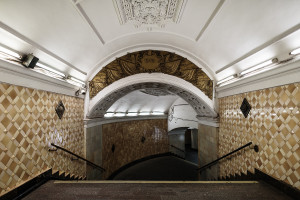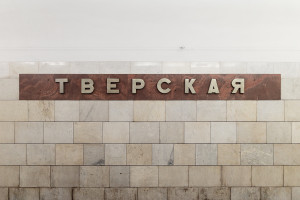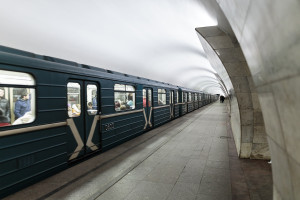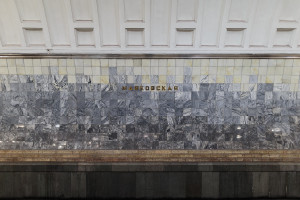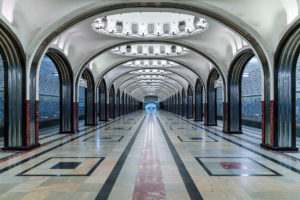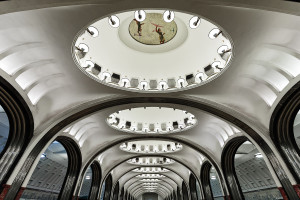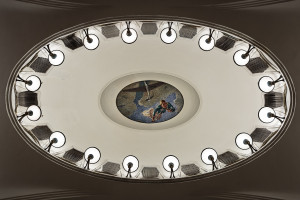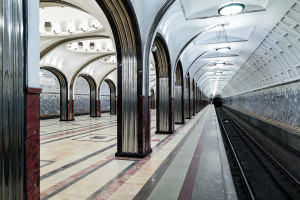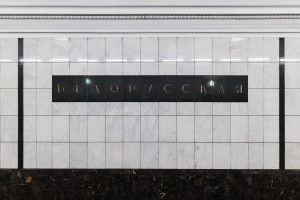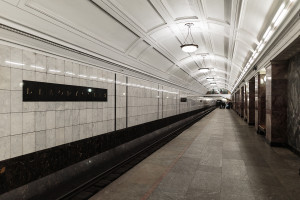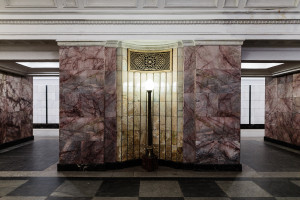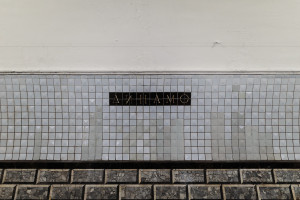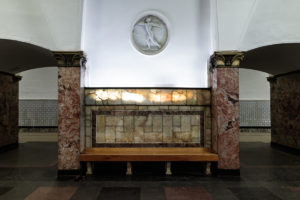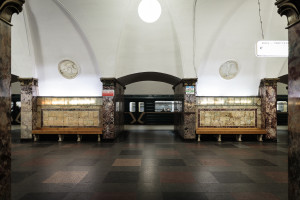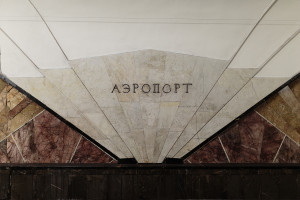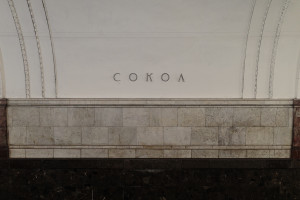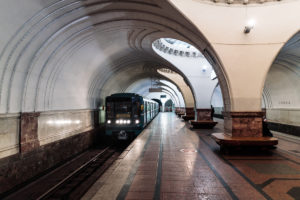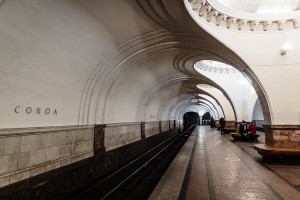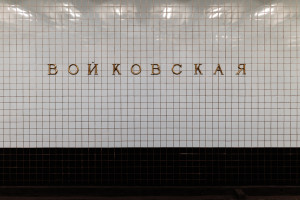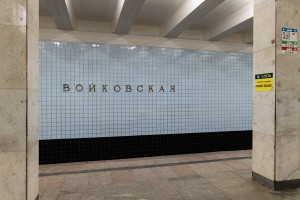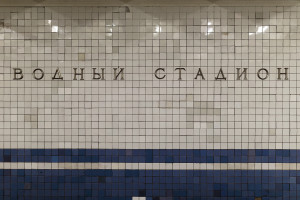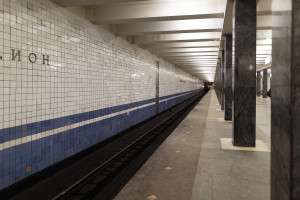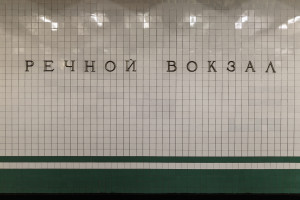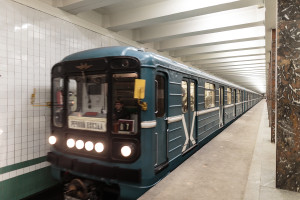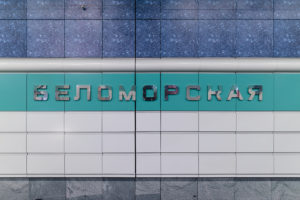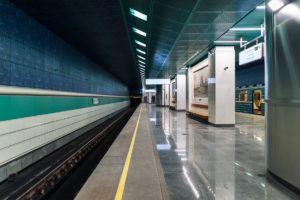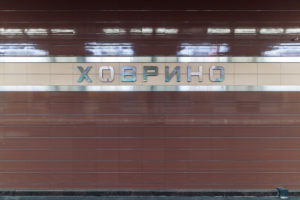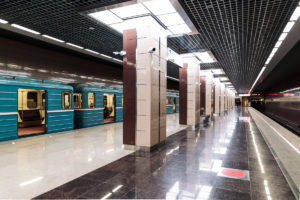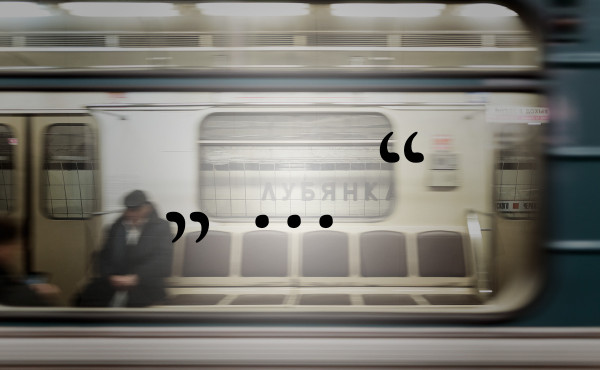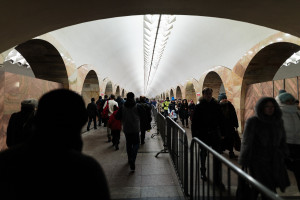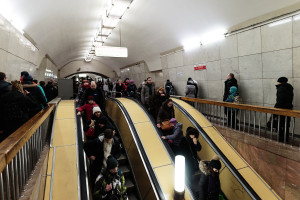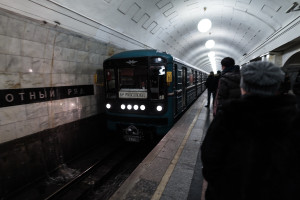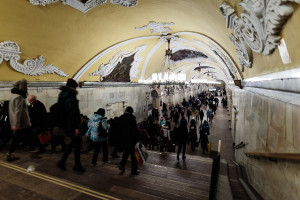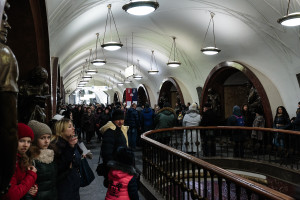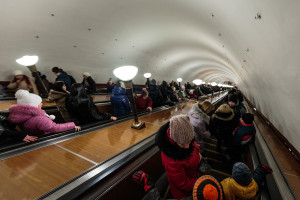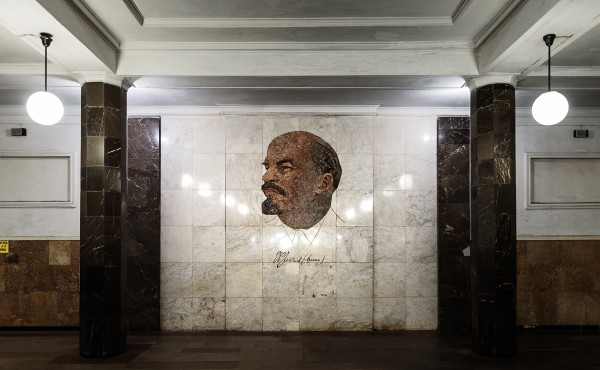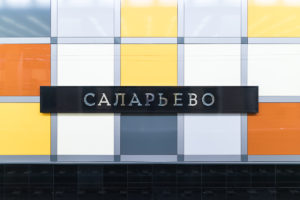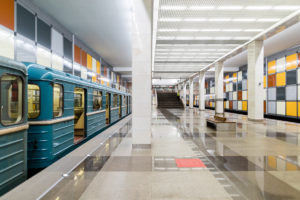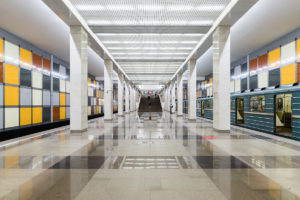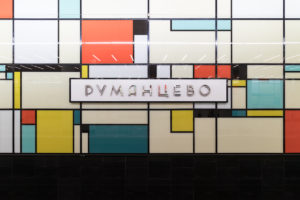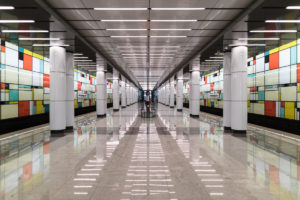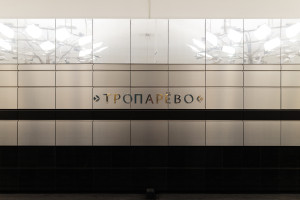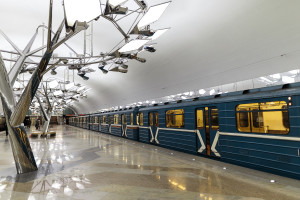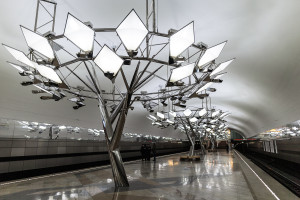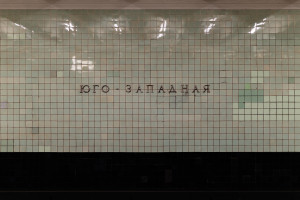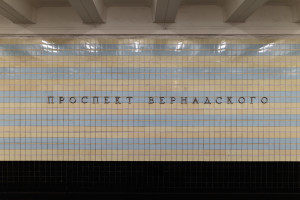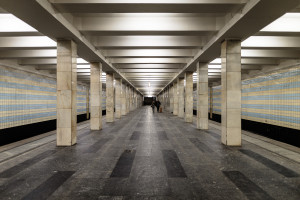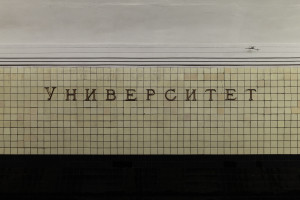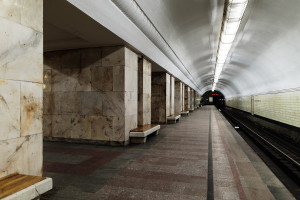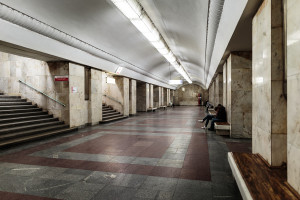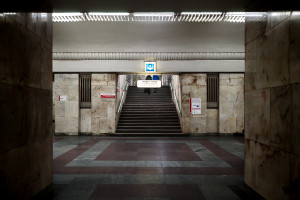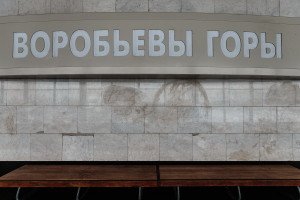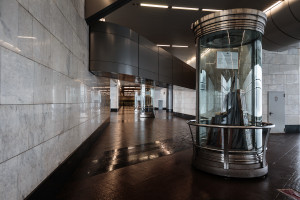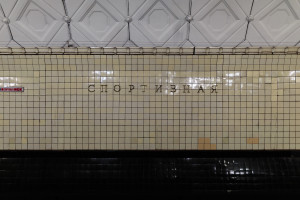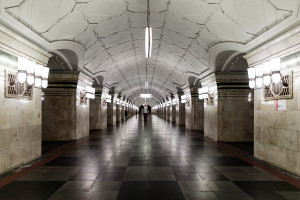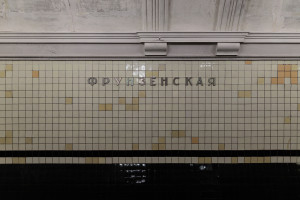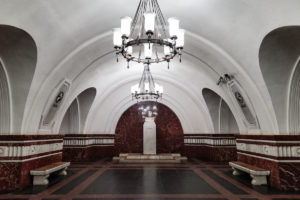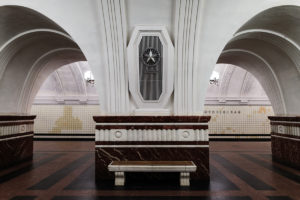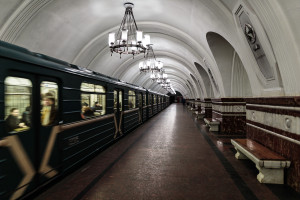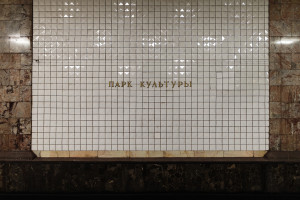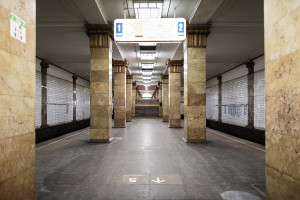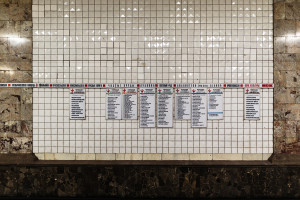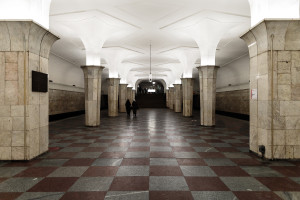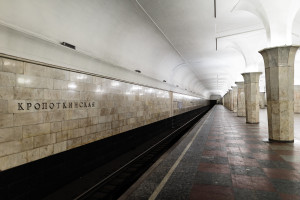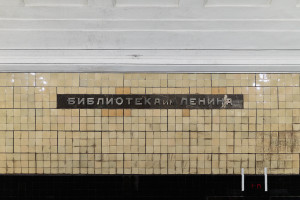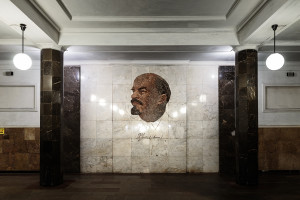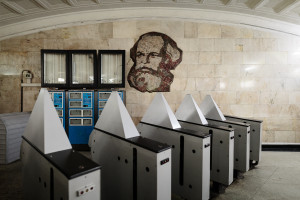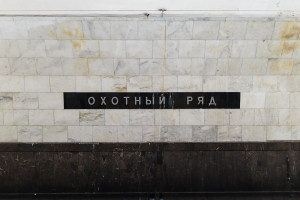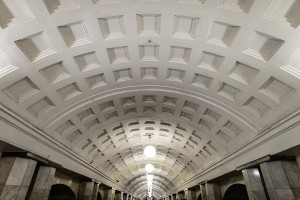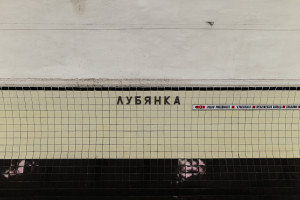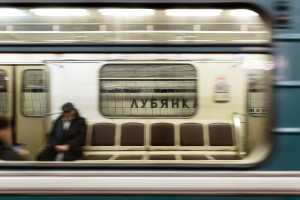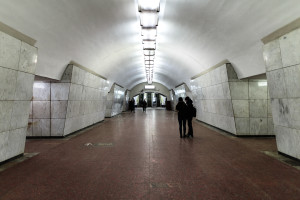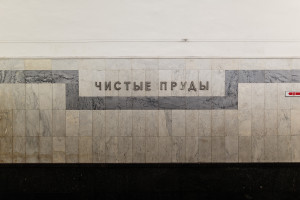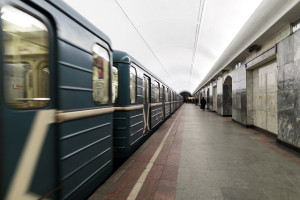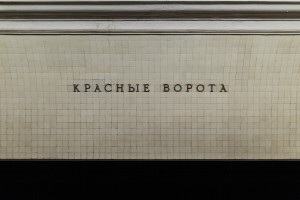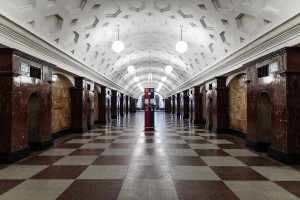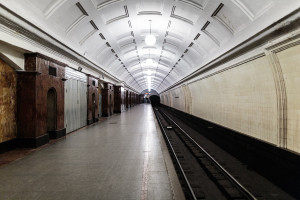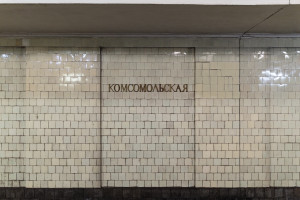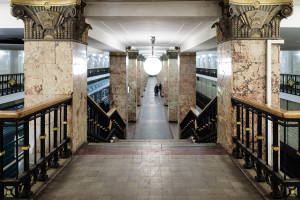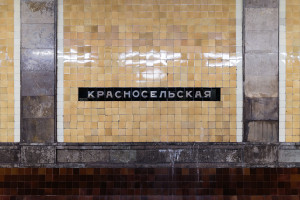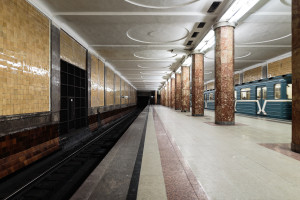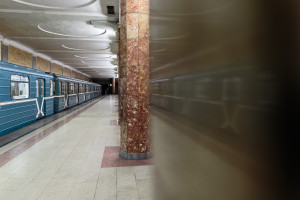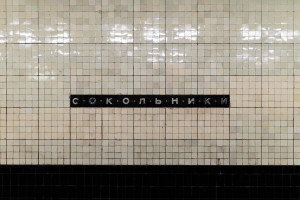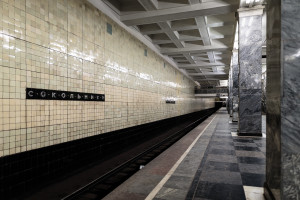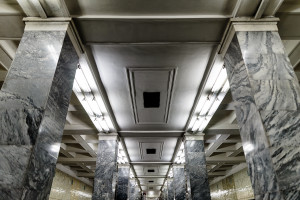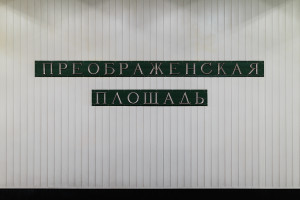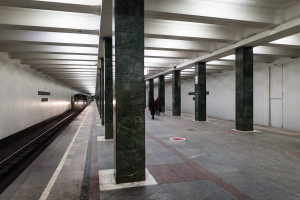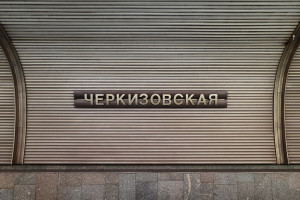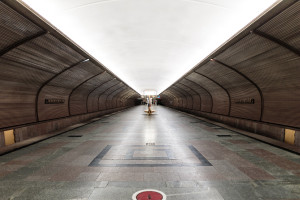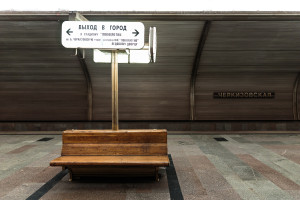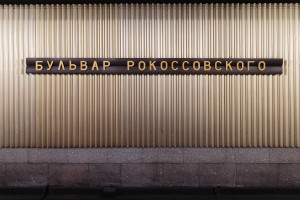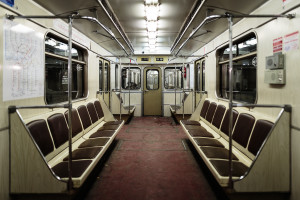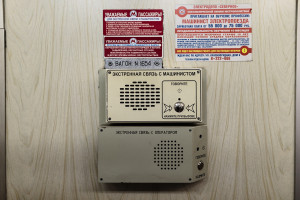16
2016- Station sign of Aleksandrovsky Sad station
- The way you enter Aleksandrovsky Sad coming from Teatralnaya
- Station sign of Arbatskaya station
- Mighty columns and yellow-blue tiled walls shape the Filyovskaya part of Arbatskaya station
- Station sign of Smolenskaya station
- Station sign of Kiyevskaya station
- Filyovskaya line part of Kiyevskaya station and its yellow-tiled walls are currently under reconstruction
- Station sign of Vystavochnaya station
- Vystavochnaya, the new interchange of Filyovskaya to Kalininsko-Solntsevskaya line
- Station sign of Mezhdunarodnaya station
- Central aisle of Mezhdunarodnaya, the International station
- Platform of Mezhdunarodnaya station
- Station sign of Studencheskaya station
- Station sign of Kutuzovskaya station
- Above ground built Kutuzovskaya station is located under a road bridge
- Station sign of Fili station
- Name-giving Fili station of Filyovskaya line
- Station sign of Bagrationovskaya station
- Bagrationovskaya station is located under a big road bridge
- Station sign of Filyovsky Park station
- Filyovsky Park, name giving station of Filyovskaya
- Station sign of Pionerskaya station
- Above ground built Pionerskaya station is located under a big road bridge
- Station sign of Kuntsevskaya station
- Kuntsevskaya, above ground built interchange to Filyovskaya line
16
2016- Station sign of Pyatnitskoye Shosse station
- Black and white marble make the contrast of new Pyatnitskoye Shosse station
- Station sign of Mitino station
- Two train of Arbatsko-Pokrovskaya line meet each other at Mitino station
- Station sign of Volokolamskaya station
- The curved arch columns of Volokolamskaya station
- Station sign of Myakinino station
- Above ground built Myakinino station
- Station sign of Strogino station
- Large daylight inlets cut through the ceiling of Strogino station
- Station sign of Krylatskoye station
- Architecture of Krylatskoye station
- Station sign of Molodyozhnaya station
- Platform of Molodyozhnaya station
- Station sign of Kuntsevskaya station
- Kuntsevskaya, above ground built interchange to Filyovskaya line
- Station sign of Slavyansky Bulvar station
- Entrance area of Slavyansky Bulvar station
- Slavyansky Bulvar and its signpost homage to the Paris Metro
- Station sign of Park Pobedy station
- Red, black and white dominate the central aisle of Park Pobedy station
- Red, black and white dominate the central aisle of Park Pobedy station
- Platform of Park Pobedy station
- Tunnel and interchange to Kalininskaya line at Park Pobedy station
- Station sign of Kiyevskaya station
- Picturesque Kiyevskaya station is through and through dedicated to Ukraine and its folklore
- Main mural of Kiyevskaya station that is dedicated to Ukraine
- Murals at Kiyevskaya station are dedicated to folklore and traditions of Ukraine
- Station sign of Smolenskaya station
- Mural, heavy brass sconces and white marble pylons of Smolenskaya station
- Phone booth inside Smolenskaya station entrance building
- Station sign of Arbatskaya station
- Classicistically looking high arches and chandelliers of central aisle of Arbatskaya station
- The massive and classicistically embellished pylons of Arbatskaya station
- Station sign of Ploshchad Revolyutsii station
- The famous dog whose luck bringing snout gets touched by Muscovites when leaving the train
- Ploshchad Revolyutsii station and its mighty red marble arches, each framed by two bronze statues
- View through the massive pylons of Ploshchad Revolyutsii station
- Touching the rooster brings luck and lets brass shine
- Touching the dog’s snout at ‘Revolution Sqaure’ brings luck and happiness
- A big arch spans the escalator leading to Ploshchad Revolyutsii station
- Mural above the box offices of Ploshchad Revolyutsii station
- Station sign of Kurskaya station
- Platform of Kurskaya station
- Station sign of Baumanskaya station
- Two old ladies suss out the Lenin mural inside Baumanskaya station
- Bronze statue of a Red Army soldier at Baumanskaya station
- Station sign of Elektrozavodskaya station
- Imposingly illuminated central aisle of Elektrosavodskaya station
- Marble-made mural and detail of a column of Elektrozavodskaya station
- Hammer and sickle, detail of a column inside Elektrozavodskaya station
- Station sign of Semyonovskaya station
- Large emblem dedicated to Red Army inside Semyonovskaya station
- View through the columns of Semyonovskaya station and its military emblems
- Metal emblem displaying a missile at the wall of Semyonovskaya station
- Station sign of Partizanskaya station
- The third rail of Partizanskaya station is often used for exhibitions
- Station sign of Izmaylovskaya station
- Above ground built Izmaylovskaya station near Izmaylovsky Park
- Station sign of Pervomayskaya station
- Train of Arbatsko-Pokrovskaya line
- Station sign of Shchyolkovskaya station
- Architecture of Shchyolkovskaya station
16
2016- Station sign of Alma-Atinskaya station
- Curved lamps illuminate the marble floor of Alma-Atinskaya station
- Symmetry of Alma-Atinskaya station, terminus of Zamoskvoretskaya line
- Station sign of Krasnogvardeyskaya station
- Light reflecting from the ceiliing of Krasnogvardeyskaya station
- Station sign of Domodedovskaya station
- Mural dedicated to aviation and near airport inside Domodedovskaya station
- Platform of Domodedovskaya station
- Station sign of Orekhovo station
- Architecture of Orekhovo station
- Station sign of Tsaritsyno station
- Mural of Tsaritsyno station reminds of the 1917 revolution
- Station sign of Kantemirovskaya station
- Train of Zamoskvoretskaya line ready to depart from Kantemirovskaya station
- Signpost and waiting area of Kantemirovskaya station
- Station sign of Kashirskaya station
- Red marble cladded columns and mural of Kashirskaya station
- Station sign of Kolomenskaya station
- Wrought-iron mural inside Kolomenskaya station
- Station sign of Tekhnopark station
- Tekhnopark, the youngest and above ground built station of Zamoskvoretskaya line
- Station sign of Avtozavodskaya station
- Avtozavodskaya station and its columns as high as a house
- Station sign of Paveletskaya station
- The platform of Paveletskaya station is inspired by arches
- Mural above the escalators leading down to Paveletskaya station
- Station sign of Novokuznetskaya station
- Main aisle of Novokuznetskaya station
- Arched ceiling and mosaic illustration of Novokuznetskaya station
- View throuh pylons of Novokuznetskaya station
- Revolutionary mural and newspaper dispenser inside Novokuznetskaya station
- Station sign of Teatralnaya station
- Mural and tribut to ballet inside Teatralnaya station
- Platform of Teatralnaya station
- Underground tunnel between Teatralnaya and Okhotny Ryad stations
- Detail of the underground tunnel between Teatralnaya and Okhotny Ryad stations
- Station sign of Tverskaya station
- Train of Sokolnicheskaya line ready to depart from Tverskaya station
- Station sign of Mayakovskaya station
- Main aisle of Mayakovskaya station (Маяковская)
- Long-stretching arches of ceiling of Mayakovskaya station
- Detail and mosaic of arched ceiling inside Mayakovskaya station
- Platform of Mayakovskaya station with is wonderfully red marble decorated columns
- Station sign of Belorusskaya station
- Platform of Belorusskaya station
- Wainscoted with red marble, the pylons inside Belorusskaya station
- Station sign of Dinamo station
- Greek-style based ornamentation of Dinamo station
- View through the pylons of Dinamo station
- Station sign of Aeroport station
- Architecture of Aeroport station
- Station sign of Sokol station
- Train of Moscow Metro arriving Sokol station (Сокол)
- Elegantly curved lines shape Sokol station
- Station sign of Voykovskaya station
- View of the tiled wall and through the pillars of Voykovskaya station
- Station sign of Vodny Stadion station
- Platform of Vodny Stadion station
- Station sign of Rechnoy Vokzal station
- Train of Zamoskvoretskaya line arrives terminus station Rechnoy Vokzal
- Station sign of Belomorskaya station (Беломорская)
- Platform of Belomorskaya station (Беломорская)
- Station sign of Khovrino station (Ховрино)
- Platform of Khovrino station (Ховрино)
16
2016Uvazhayemyye passazhiry! – Finally Moscow, finally photographing the queen of undergrounds, that’s what I dreamed of since 2007 when I saw the subterranean palaces of the Russian capital for the very first time. Back then photography was strictly forbidden as, even today, the Moscow Metro is of high strategic value. Today things are different as green smiley pictograms signalise visitors that photographing is absolutely ok. If you do that professionally then you do need a permission though and thanks to my friend Yury I could show that whenever I got asked. Thank you, Yury!
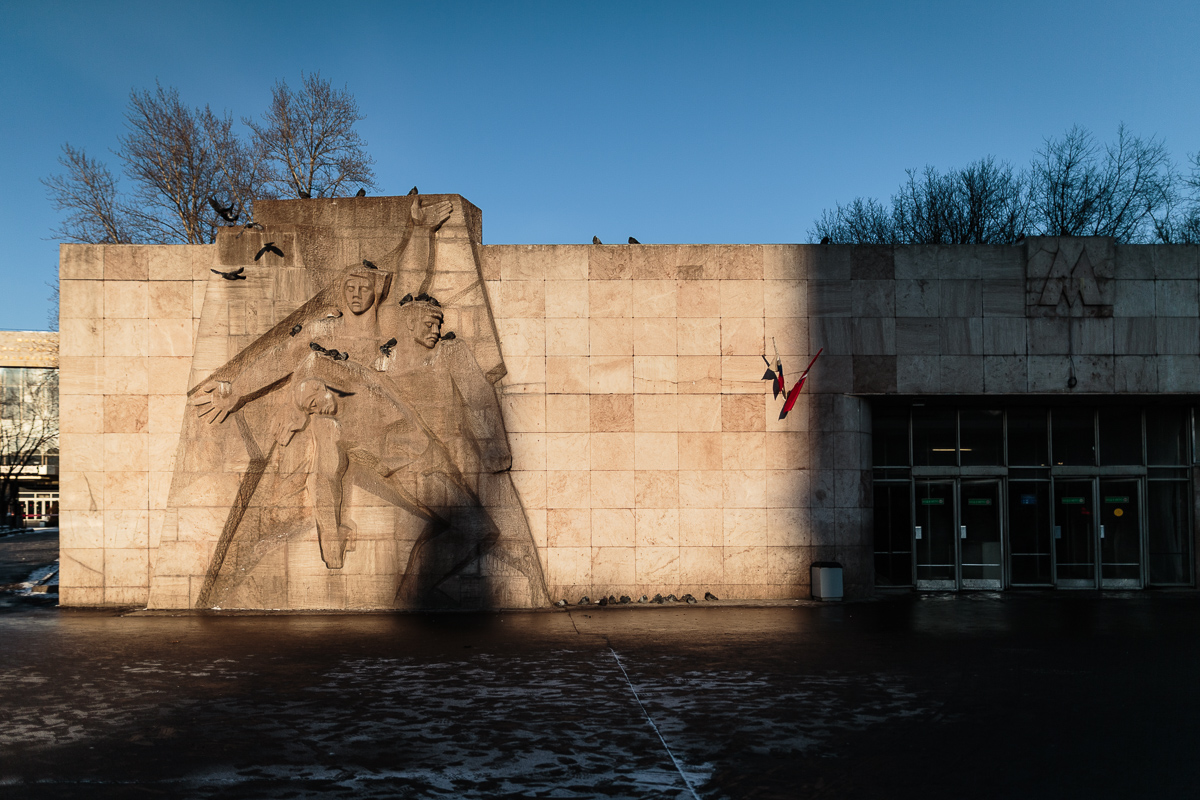
Entrance building of Barrikadnaya station
All in all three major architecture periods become apparent in the Moscow Metro:
- classicistic, even Greek appearing underground halls (example: Komsomolskaya)
- functional column-born cubic stations (example: Molodyozhnaya)
- modern stations with daylight inlets or glass and steel (example: Lermontovsky Prospekt or Volokolamskaya)
Monument protection has highest priority, hence the Moscow Metro stations are advertising-free, what is anodyne for western eyes being in a state of sensory overload. And there is another very charming and heart-winning detail: the majority of station names ends with „-aya“ – a tribute to women.
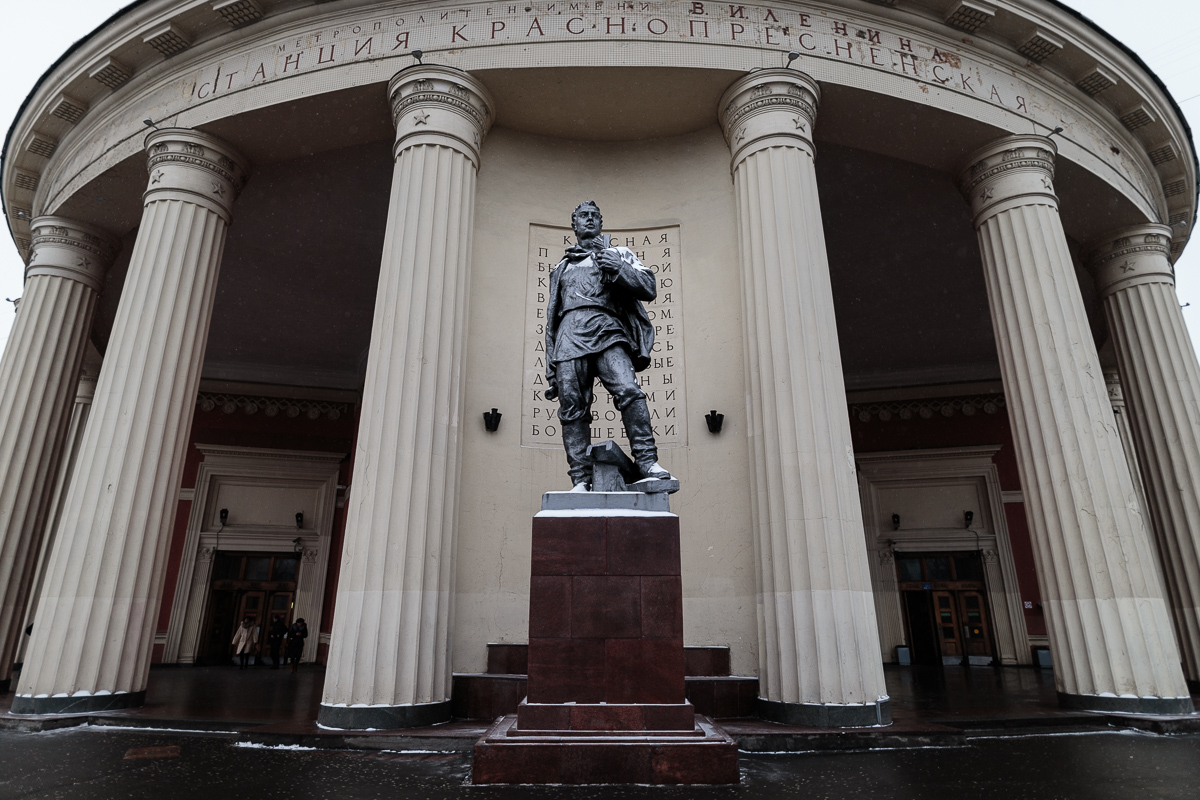
Entrance building of “Krasnopresnenskaya” station
For the Muscovites their metro is a main artery. Deep down in the bowels of Moscow there is no traffic jam like it’s often the case above ground. The metro just always runs. To boot it is an inherent part of the city, it is fully accepted, what gets revealed when people make appointments as they always meet in and at metro stations. “14 o’clock Kitay-Gorod, then 19 o’clock at Smolenskaya, ok?” That’s a very usual way to make appointments, hence the middle of the platform is packed with people waiting for people. Also free Wi-Fi plays an important role and explains why so many people are down in the metro. They’re simply surfing :-)
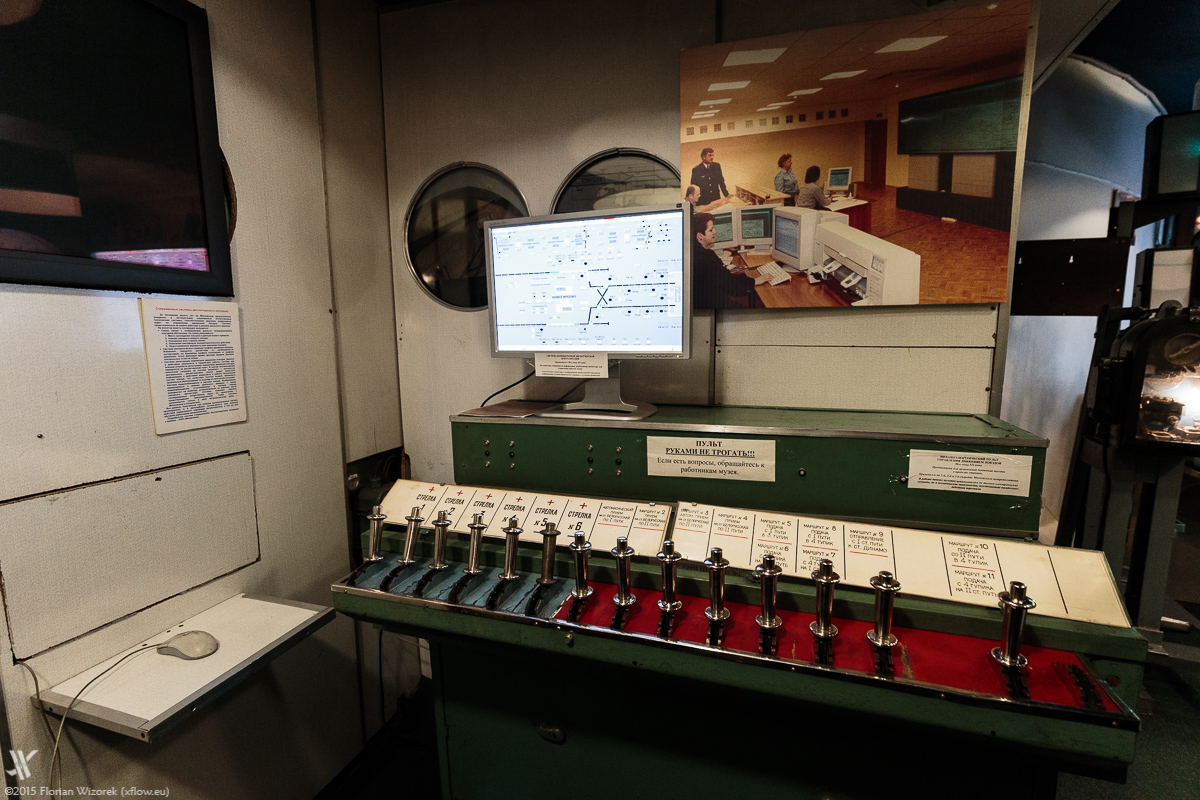
Old signal box control unit at the Moscow Metro Museum (Sportivnaya station)
To photograph one of the subways having one of the highest passenger volumes in the world I have chosen the first days of January as at that time of the year many Muscovites are not in town. In the morning hours that aid was pretty much visible as the platforms at 7 o’clock are the very opposite of 13 o’clock, meaning that in the afternoon the Moscow Metro is packed par excellence. Then things, in particular at the big interchange stations like Paveletzky, Kievskaya or Komsomolskaya, are pretty much buzzing.
5 days in a row, each time beginning at 6 o’clock in the morning, I went into the Moscow Metro what resulted in some 75 Gigabytes of data. Fortunately I could capture Frunzenskaya before it got closed for a year on January 2nd, 2016. Also I was lucky that recently freshly reconstructed Baumanskaya got reopended again and that I could include the latest addition to the metro network, that is Tekhnopark station.
And that’s what the Moscow Metro usually appears like: people wherever one looks…
- Stream of passengers at “Kuznetsky Most” station
- Packed interchange to line 7 (Kuznetsky Most) at Lubyanka station
- Train arriving the packed platform of Ochotny Ryad
- Stream of passengers through “Komsomolskaya” station
- Dozens of people and even guided tours push through “Revolution Square” station
- Well packed escalator of Sportivnaya station
Another aid is the very short interval of trains arriving, that’s ranging between 90 and 120 seconds according to time of the day and ridership. Every 2 minutes a new train. Amazing! And always people are inside…, unlike in Berlin, where I live, where you can barely spot 3 (!!!) passengers at noon on Christmas Day. The frequent train service helps me a lot to make progress in an underground network that is 333.3 kilometres long, comprising 12 different lines with trains stopping at 200 stations (as per July 2016). Though taking photos was everything but easy and I was lucky having caught the Moscow Metro that empty. To show you the usual hustle and bustle I’ve included some photos here to exhibit how many people you can meet in the metro even at holiday time.
The whole photo series was created solely using the prime lens Sigma 24mm f/1.4 DG HSM Art.
http://mosmetro.ru
https://en.wikipedia.org/wiki/Moscow_Metro
08
2015- Station sign of Salaryevo station
- Train of Sokolnicheskaya line ready to depart from Salaryevo station
- Symmetry of Salaryevo station
- Station sign of Rumyantsevo station
- Symmetry of Rumyantsevo station
- Station sign of Troparyovo station
- Train of Sokolnicheskaya line ready to depart from Troparyovo station
- Stainless steel trees decorate Troparyovo station
- Station sign of Yugo-Zapadnaya station
- Station sign of Prospekt Vernadskogo station
- Architecture of Prospekt Vernadskogo station
- Station sign of Universitet station
- Platform of Universitet station
- Central aisle of Universitet station
- View through the massive pylons of Universitet station
- Station sign of Vorobyovy Gory station
- Central aisle of Vorobyovy Gory station (Sparrow Hills station)
- Station sign of Sportivnaya station
- Central aisle of Sportivnaya station
- Station sign of Frunsenskaya station
- Station to honour Mikhail Vasilyevich Frunse, a Soviet Red Army commander in the Russian Civil War
- View trough the arches shaped by Frunsenskaya station’s pylons
- Chandeliers top the platform of Frunsenskaya station
- Station sign of Park Kultury station
- Spandrel-braced platform of Park Kultury station
- Departure indicator at the wall of Park Kultury station
- Station sign of Kropotkinskaya station
- Central aisle of Kropotkinskaya station
- Platform of Kropotkinskaya station
- Station sign of Biblioteka imeni Lenina station
- Lenin portrait gracing the end of Biblioteka imeni Lenina station platform
- Access control gates under the watchful eyes of Karl Marx (Biblioteka imeni Lenina)
- Station sign of Okhotny Ryad station
- Arched ceiling of Okhotny Ryad station
- Station sign of Lubyanka station
- Train of Sokolnicheskaya line rushing through Lubyanka station
- Central aisle of Lubyanka station
- Station sign of Chistye Prudy station
- Train of Sokolnicheskaya line departs from Sokolnicheskaya line
- Station sign of Krasnye Vorota station
- Red and white marble dominate Krasnye Vorota station
- Platform of Krasnye Vorota station
- Station sign of Komsomolskaya station
- Stair down to platform of Komsomolskaya station on Sokolnicheskaya line
- Station sign of Krasnoselskaya station
- Architecture of Krasnoselskaya station
- Train of Sokolnicheskaya line ready to depart from Krasnoselskaya station
- Station sign of Sokolniki station
- Platform of Sokolniki station
- Ceiling structure of Sokolniki station
- Station sign of Preobrazhenskaya Ploshchad station
- Architecture of Preobrazhenskaya Ploshchad station
- Station sign of Cherkizovskaya station
- Architecture of Cherkizovskaya station
- Waiting area of Cherkizovskaya station
- Station sign of Bulvar Rokossovskogo station
- Moscow Metro train of Sokolnicheskaya line
- Emergeny intercom in train of Sokolnicheskaya line

 Deutsch
Deutsch